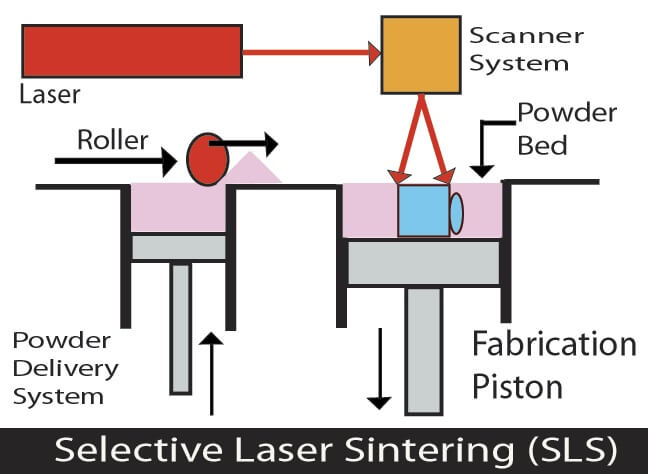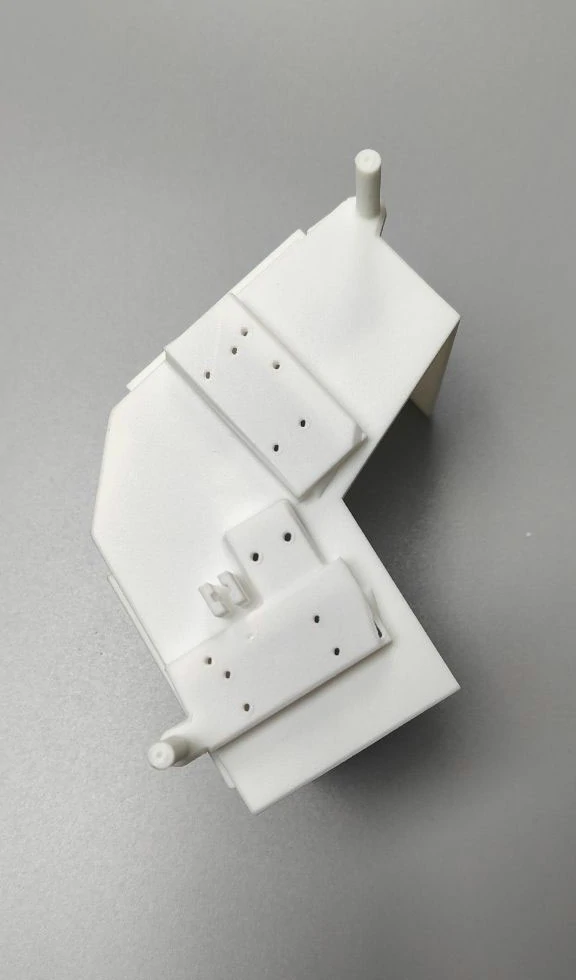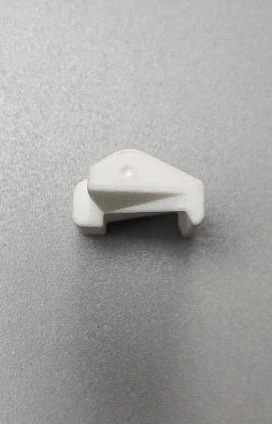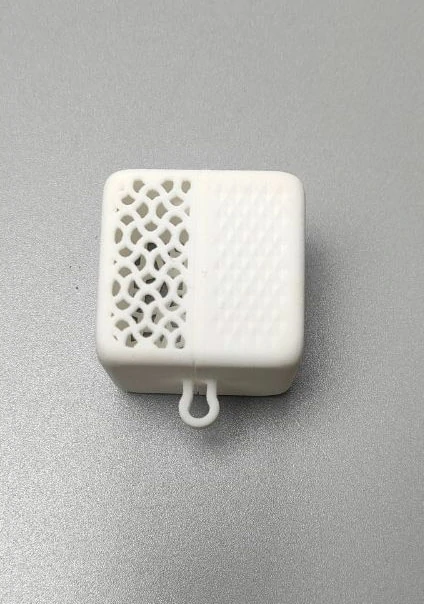Selective Laser Sintering SLS
What is SLS?
3D printing technology SLS, full name Selective Laser Sintering, is an additive manufacturing technology. It uses a laser to selectively sinter particles of polymer powder, fuse them together and build a part layer by layer. The materials used in SLS are thermoplastic polymers, polyamide (PA), polystyrene (PS), thermoplastic elastomer (TPE), polyaryl ether ketone (PAEK), and so on. Of course, it is used in the form of powder particles.
How does SLS work?
First, the powder bin and build area are heated to just below the melting temperature of the polymer, and then the blade is recoated to spread a thin layer of powder on the build platform.
Next, the laser of the high-power laser scans the cross section on the surface of the powder bed and selectively sinters (fuses together) the particles of polymer powder.
When one layer is completed, the build platform moves down and the blade recoats the surface. Then repeat the process until the entire part is completed.

History of SLS
Selective Laser Sintering (SLS) was developed and patented by Dr. Carl Deckard and academic adviser, Dr. Joe Beaman at the University of Texas at Austin in the mid-1980s, under sponsorship of DARPA. Deckard and Beaman were involved in the resulting start up company DTM, established to design and build the SLS machines.
In 2001, 3D Systems, the biggest competitor to DTM and SLS technology, acquired DTM. The most recent patent regarding Deckard’s SLS technology was issued 28 January 1997 and expired 28 Jan 2014.
Advantages of SLS
- SLS parts have good isotropic mechanical properties, making them ideal for functional parts and prototypes.
- SLS does not require support, so designs with complex geometries can be easily generated.
- The manufacturing capacity of SLS is very suitable for small and medium batch production.
Disadvantages of SLS
- Currently only industrial SLS systems are widely available, so the delivery time is longer than other 3D printing technologies such as FDM and SLA.
- SLS parts have a granular surface finish and internal pores. If a smooth surface or water tightness is required, post-treatment may be required.
- Large planes and small holes cannot be printed accurately with SLS because they are prone to warping and over-installation.
LAVA SLS 3D Printing
SLS 3D printing is relatively less used. Nylon is generally used as its printing material.
The following is the product 3D printed by SLS with PA12:



Contact Us
If you have any questions or needs for 3D printing, please contact us and we will reply you soon.
